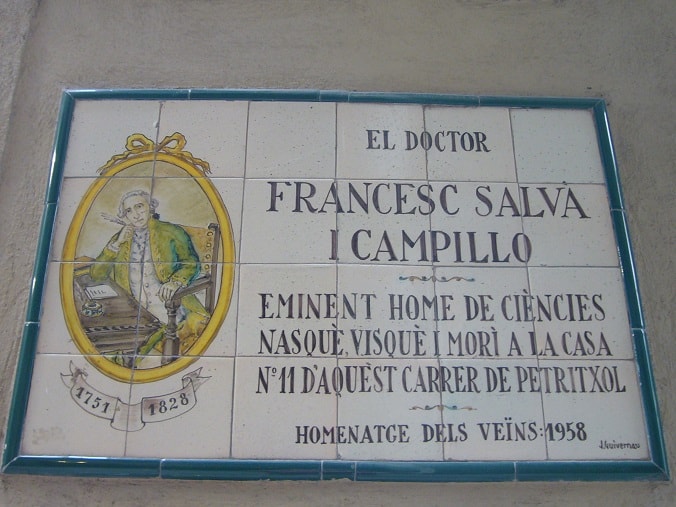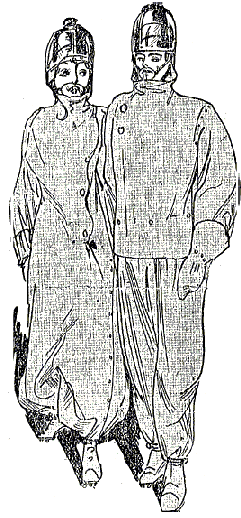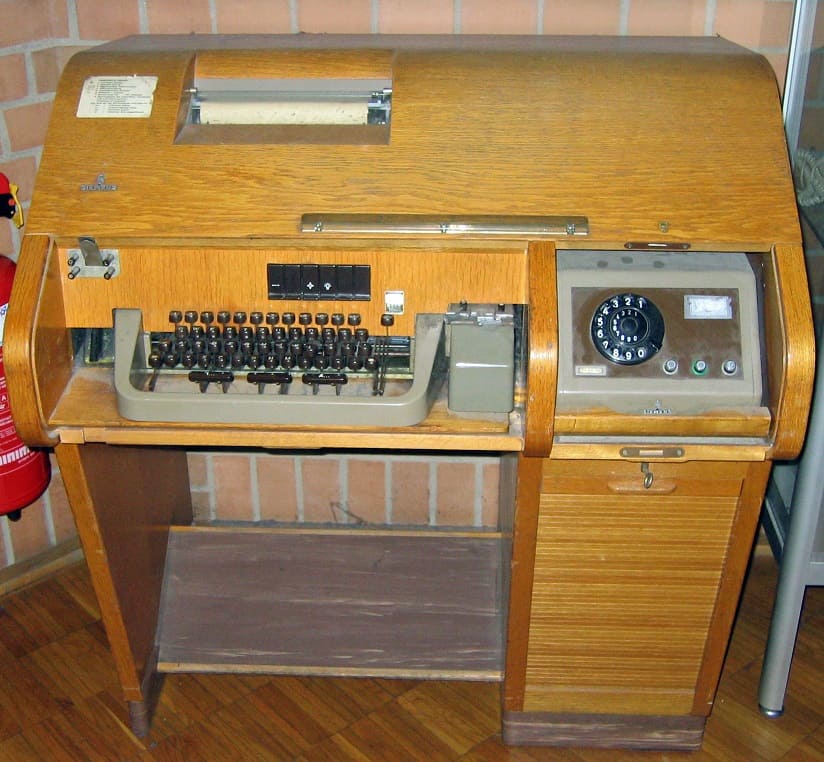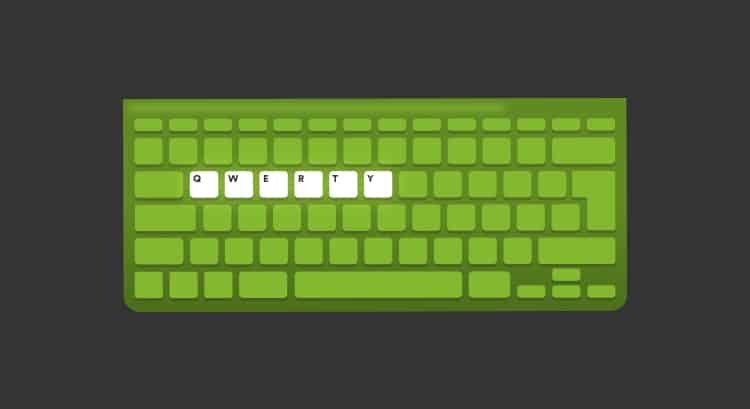QWERTY layout; where does it come from and what does it mean?
SOS. Those three letters?, they represent almost at worldwide level a naval distress call… What does the QWERTY layout have to do with the keyboards we use every day? Spoiler Alert: Morse Code Is Involved!
Well, someone might say, “here is another boring article on the QWERTY layout”, but what they did not count on is that the “F” in our name means flexibility and we tend to see things as a whole; Similar to Pandora FMS Web Console dashboard.
Morse Alphabet
Or Morse code: in the 19th century they set out to give practical use to electricity and its electromagnetic wave, which travels almost at the speed of light. Mr. Samuel Morse first used it to send coded numbers and then it was extended to the rest of the English alphabet. I have already talked about trits and I think Morse code is based on it too, but without negative numbers: pause (zero), period (one) and dash (two).
Well, in French CQ, abbreviation for security, “sécurité” (sécu) instructed operators to stop broadcasting as there was an urgency to communicate something important (something similar to a network wide broadcast message).
A letter D was later added at the end standing for “Détresse” (aid); that meant “stop transmitting, distress call!” (I’m actually paraphrasing). This was literally spelled by radio telegraph, that is, they inserted a space between letter and letter. While this happened in 1904 in France almost academically, in Germany they proposed the use of SOS not spelled but as a symbol, without spaces: that way it stayed like three points, three dashes and three points, being shorter and less prone to misinterpretations. This must be represented with a line upon the three letters, to indicate symbol unit (SOS).
Then at the beginning of the twentieth century, the radiotelegraph was like the Internet at the beginning of this XXI century, and many standards were being proposed and implemented. Although CQD was proposed and approved, pragmatism was imposed with SOS!
Francisco Salvá Campillo

By Jordiferrer – Treball propi, CC BY-SA 3.0, https://commons.wikimedia.org/w/index.php?curid=20672461
This notable Catalan doctor stood out more as a physicist, since in 1796 he made a demonstration of the feasibility of telegraphy in Madrid, but he was too ahead of his time: he needed many cables to be able to represent each letter and symbol and it was complex to implement with the technology and human habits of that time.
Guglielmo Marconi, inventor of radiotelegraphy or wireless telegraphy, was able to see and recognize the courage and inventiveness of this Spanish scientist. By the way, look at the suit they advised to protect radio operators from alleged harmful radio waves. Any resemblance to the present is not pure coincidence, our human nature is always like that in the face of the unknown.

By Rolfe Hensingmuller (or Rolf Hensingmüller) – The Atlanta Constitution, page C6, Online, Public Domain, https://commons.wikimedia.org/w/index.php?curid=20517458
But, as I said at the beginning, also here simplicity prevailed, and it was easier to connect a positive and a negative wire with short and long pulses separated – sometimes not – by pauses, to send the information. The technological miracle had taken place, but now it remained to be seen if human beings were capable of learning the convoluted code. They hoped that with more technology something faster and more secure could be established (so as not to lose data, I mean).
The piano and the typewriter
Johannes Gutenberg had developed the printing press around the year 1450 and he made movable types, made of metal, to replace those made of wood, weaker and more tricky to manufacture. Another important issue was their number, about 150 different ones, and from there he began, through trial and error, to study which letters or characters were used most often.
With this technology, it was possible to revolutionize book manufacturing, something previously done manually and slowly and prone to transcription errors. In the century of telegraphy, typewriters were a great advance for any common person, as was the power of having a machine that emulates a printing press in their own home.
By the 1860s, telegraph companies were open to innovation – telecommunications were, and are, a flourishing business – and they were buying Hughes-Phelps printing telegraph even though they had piano-like keyboards, but with only 28 keys. They assigned from letter A to letter N at the top (“black keys”) and the rest at the bottom (“white keys”), but these were in reverse order (from right to left). Yes, I know what you are thinking: and numbers?
Tying up loose ends
That was the demand made by the first buyer of the typewriter created by Carlos Glidden, James Densmore, Samuel Willard Soulé and Christopher Latham Sholes, the latter known as the father of typewriters.
Who bought this prototype was Mr. Edward Payson Porter in 1868, head of his own telegraph school, Porter’s Telegraph College. Why did the telegraph and the typewriter cross paths? The messages needed to be transcribed in a single step and in a presentable way, because we all have different handwriting. From using computers so much, it sometimes takes me three seconds before I start writing with pencil and paper: what is not used, the brain forgets over time. If before my handwriting was ugly, now without practice, imagine the result… because at that time the issue was also that, legibility and uniformity.
In 1870, they delivered a second version of the typewriter, with 38 keys. It included the numbers two through nine, hyphen, comma, period, and the question mark. You may be wondering where the numbers one and zero were, and the same question I asked myself in 1981 when one of my maternal uncles “migrated” from mechanical to electric typewriters in his office and gave me one of the old typewriters: the letter “L” worked as number one as well and the same for letter “O” and zero.
At this time, the alphabetical order was broken, since there were four rows of keys:
- The first row contained the numbers and the dash at the end.
- The second row contained the vowels, with the period and question mark in the center and the comma at the end. As a rare thing, the letter “y” was also included.
- The third and fourth ones kept the similarity with the “piano keyboard” of the first model, of course without the letters named above.
With this improvement working smoothly, Mr. Sholes and his sponsor and partner Densmore soon faced another much bigger stumbling block: They made a sales pitch to the American Telegraph Works represented by George Harrington, whose partner was Thomas Alva Edison himself, creator of the manufacture of the electric light bulb that we still use in our ovens and kitchens.
For Edison, the key layout was horrible and he saw no commercial possibility for that model. Considering that Edison tested more than 300 different materials for his electric light bulb and accumulated more than a thousand patented inventions throughout his life, this key layout problem was not little thing at all.
Mighty Mr. Money
Harrington also had another partner named Daniel Hutchins Craig and both, against Edison’s will, offered to make a good purchase for typewriters as long as the keyboard was improved: the QWERTY layout was about to be born.
They soon studied and relied on the trades of the common telegrapher, such as the frequent errors of confusing letters like “c” and “s” or the letter “z” with the pair of letters “s” and “e”, in addition to many other peculiarities. But in the end it was all well rewarded and as sales increased (they managed to capture the large Western Union Telegraph Company in Chicago as a customer) they soon realized that they were not able to manufacture enough units to satisfy the market.
In 1873, Sholes went to New York and made a deal with E. Remington & Sons, prosperous arms manufacturers: The model brought into production was QWE.TY and almost reaching the QWERTY layout! It had 43 keys and thus the Sholes & Glidden Type-Writer was born. At the end of that same year, Remington employees modified the keyboard again, replacing the dot by the letter “r” and the letter “y” by “u”, creating QWERTU.
They also added another key only used in the telegraph, the three vertical dots that indicated “paragraph break” and, surprisingly this was not included in the ASCII encoding in 1963 and it was not until 1993 that they added it to UNICODE for multilingual purposes.
Patent for QWERTY distribution
But the one who did not agree with this QWERTU distribution was Sholes himself, who moved the letter “y” between “t” and “u”. This was the birth certificate of the QWERTY distribution as he quickly went on to patent the new mechanical contraption in 1874. Although very determined for that moment, after time and shortly before he died, Sholes published a different distribution but that never became popular.
In 1875, the Remingtons bought the idea of capitalization with the same key for the same letter (it is better to be explicit with these things) and in 1878, the Remington Type-Writer No. 2 was born and this model brought with it almost the modern typewriter and keyboard. Here came small changes related to the subject of patents, the ways of typing, learning methods, in short, an enthusiastic community of users started contributing, sharing, founding companies and unifying ideas…
What the existence of the QWERTY distribution sealed, came with the meeting of five leading companies in typewriter manufacturing: Remington, Smith-Premier, Caligraph, DensmoreandYost (under the figure of Union Typewriter Company) and chose this layout as the norm. In 1910, the Teletype also adopted the QWERTY layout and, as we know, computer keyboards were direct heirs, if you will, of these keyboards for Télétype®.

By Flominator – Own work, CC BY-SA 3.0, https://commons.wikimedia.org/w/index.php?curid=59338
Going back to Gutenberg, in 1885 the linotype was invented, “a kind of typewriter” for printers, and based on the letters most used in the English language, the ETAOIN SHRDLU distribution emerged. In 1930, the Dvorak distribution (patented in 1936) was introduced by August Dvorak and William Dealey, which is also governed by the principle of the most frequently used letters and for several languages (not only the English language exists).
Rest of the world
Most of the planet at least has a notion of the QWERTY layout, but many countries do not have it. In the case of the French language, they use the AZERTY distribution, in German it is QWERTZ, etc.
In Asian countries, which use ideograms instead of the alphabet, this issue becomes more difficult. In fact, they use QWERTY keyboards because the motherboards and their BIOSes are not yet made in 64 bits, although the processors are to be able to support a large amount of RAM and huge hard drives. There is still a long way to go in this regard, since it was partially with the introduction of the UEFI, but for each monitor in text mode to represent each UNICODE character (and not to mention the keyboards) is a task that will take some time to solve.
Before finishing, remember Pandora FMS is a flexible monitoring software, capable of monitoring devices, infrastructures, applications, services and business processes.
Would you like to learn more about what Pandora FMS can offer you? Find out clicking here .
If you have to monitor more than 100 devices, you can also enjoy a FREE 30-day Pandora FMS Enterprise TRIAL . Get it here .

Programmer since 1993 at KS7000.net.ve (since 2014 free software solutions for commercial pharmacies in Venezuela). He writes regularly for Pandora FMS and offers advice on the forum . He is also an enthusiastic contributor to Wikipedia and Wikidata. He crushes iron in gyms and when he can, he also exercises cycling. Science fiction fan. Programmer since 1993 in KS7000.net.ve (since 2014 free software solutions for commercial pharmacies in Venezuela). He writes regularly for Pandora FMS and offers advice in the forum. Also an enthusiastic contributor to Wikipedia and Wikidata. He crusher of irons in gyms and when he can he exercises in cycling as well. Science fiction fan.


















